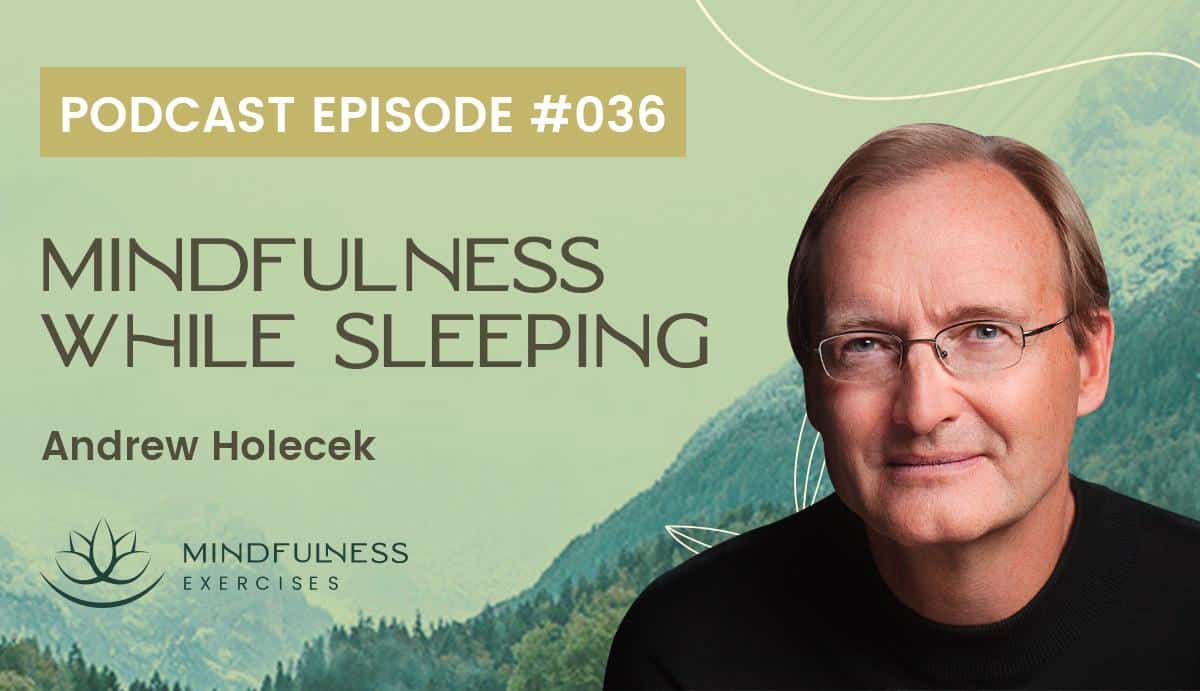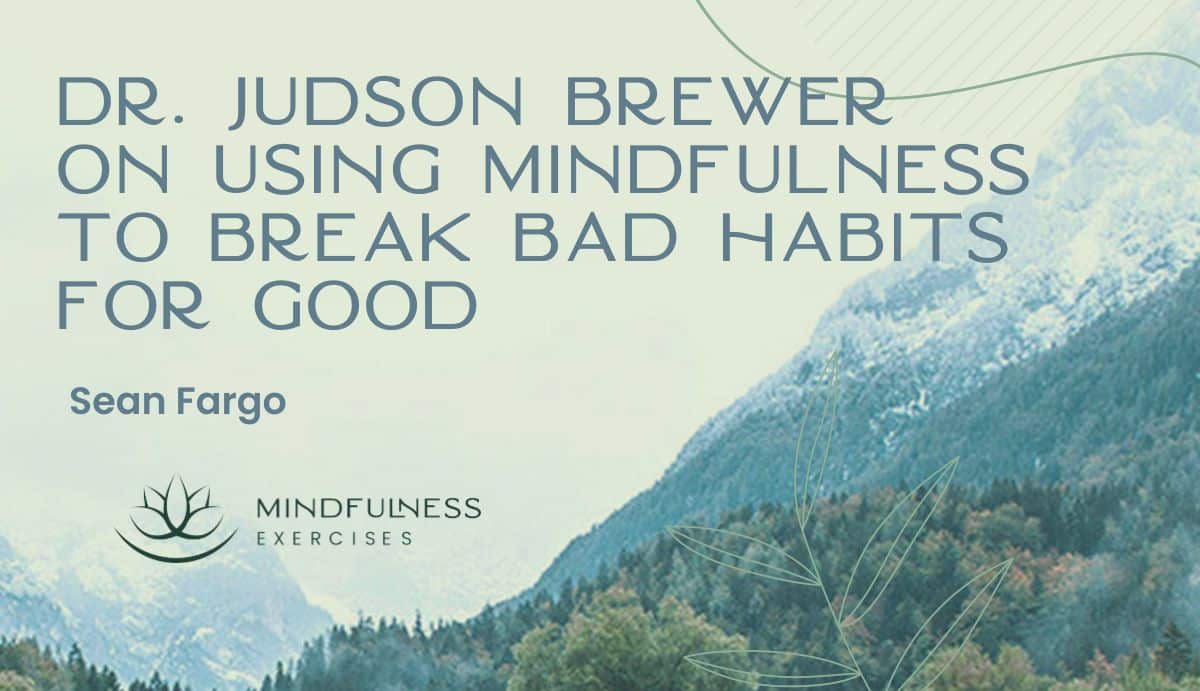Listen now

Mindfulness and meditation practice is not limited to day-time hours. In fact, being awake is not necessary at all. There are at least five types of meditation we can do while we are sleeping that benefit both body and mind. These nocturnal meditations have been practiced for thousands of years to help us shed light on the darkest parts of our unconscious, and in the process, enlighten us.
In this episode, we hear from author and spiritual teacher Andrew Holecek about these subtle, advanced nighttime practices, which anyone can learn to do. Andrew Holecek teaches worldwide on meditation, lucid dreaming, and Buddhist death preparation practices. His books include “Dream Yoga: Illuminating Your Life Through Lucid Dreaming” and “Dreams of Light: The Profound Daytime Practice of Lucid Dreaming.”
Learn how nighttime mindfulness can enhance your day-time experience by introducing lucidity into previously unconscious moments.
This talk is a brief excerpt from Andrew Holecek’s guest teacher presentation to those enrolled in our Mindfulness Meditation Teacher Training Program. Learn more about this unique, online, self-paced certification program at mindfulnessexercises.com/certify
What You’ll Learn in This Episode:
Show Notes:
Why dismissing dream states is a mistake
We typically dismiss dream states, saying things like “that’s just a dream.” But there is great benefit to honoring these subconscious and unconscious states. Up to 95% of our daily activity is dictated by the unconscious mind. Imagine then, the potential in bringing mindfulness not only to our waking state, but to our dreams and even dreamless sleeping states.
“We tend to dismiss these states of consciousness that, fundamentally, ego cannot experience. This has to do with a type of hubris, a type of wakecentricity, that ego -at this particular state of development- has towards states of consciousness it can’t fully experience, like sleep and dream.”
Using mindful dreaming to understand reality
Waking, dreaming, the dreamless sleep state, and everything in between, can help us better understand the true nature of reality. By engaging in the five nocturnal practices, we turn our attention to the dark, toward our unconscious. At first, we might not see anything. But with patience and practice, this begins to change. We start seeing what has always been there. We learn there is no darkness, only light unseen.
“And so that is, in fact, what these nocturnal meditations allow us to do. They turn on the night light so we can see things, principally in the unconscious dimensions of our being, that we have never seen before. And the more we do that, the more we’re liberated from these unconscious processes. This is what it means to be awake in the deepest spiritual sense.”
Sleeping and waking as non-binary states
We tend to have a gross relationship to consciousness. We’re either on or off, dead or alive, awake or asleep. But consciousness is not binary. Nocturnal meditation practices help us replace the on and off light switch model with a “dimmer” version. We learn to become aware of increasingly subtle states of consciousness, bringing mindfulness to previously unconscious realms.
“In the mind of an awakened one, there is no unconscious mind, they literally do not fall asleep. The mind stays on at these very subtle kind of bandwidths of consciousness, 24/7 kind of awareness. And therefore that is the result of having brought all these unconscious processes into light of consciousness and therefore that’s real freedom, that’s real liberation.”
Some benefits of lucid dreaming
Lucid dreaming is the ability to ‘wake-up’ or become aware within a dream, and yet remain dreaming. Studies show that lucid dreaming can help us with depression and alleviate nightmares completely. The practice can also heal our relationships and our psyches by empowering us to re-integrate rejected or unwanted experiences into our consciousness.
“The vast majority of our nightmares are brought about by refused, rejected, unwanted experience. In other words, what we tend to refuse in conscious experience. [...] And so therefore a great deal of nightmarish instances, especially when you’re being chased by a demon, are basically disenfranchised, dislocated and refused aspects of your identity coming back for integration and wholeness.”
Nighttime neuroplasticity
Research shows the actions we take in our less conscious states have nearly identical effects on the body and mind as the actions we take during waking hours. Thus, we can practice playing piano, rehearse a speech, train for sports, and perhaps even heal our bodies from injury and illness, all while dreaming. We can also use dreams to enhance our creativity.
“And again, studies have shown this, the biological and physiological effects on your body and your brain of the actions you perform in a dream are virtually identical to the effects of doing these actions in your waking life. In other words, dreaming of doing something is neurologically equivalent to actually doing it. Your brain can’t tell the difference.
Problem-Solving and Lucid Dreamers
When we have a problem, we’re often so close to it, we can’t see how to solve it. Similarly, a non-lucid dreamer is so close to the dream, they can’t notice they’re dreaming. Lucid dreaming teaches us to step back and gain perspective, giving us a heightened problem-solving capacity. Some researchers say increased perspectives is indicative of higher evolutionary bandwidths. Might lucid dreamers be more evolved humans?
“Some very interesting studies have shown that lucid dreamers are better at problem solving because they have the ability to step back, see things that they were previously too close to see, and that in itself is the very gist of lucidity.”
The 5 nocturnal practices
Holecek groups several dream and sleep-related practices into what he calls nocturnal meditations. These include liminal dreaming, lucid dreaming, dream yoga, sleep yoga, and the esoteric practices of bardo yoga. Each transcends, but also includes, its predecessor. For example, one passes through the liminal state to practice lucid dreaming. These practices are also omni-directional. Get better at one, and you’ll get better at the others.
“This first is called liminal dreaming, this is the one that is the most accessible for us. [...] So this is a dimension of mind that we all experience, the minute we hit the pillow until we actually fall asleep, we are in that hypnagogic space. That’s also a liminal space. Liminality literally means threshold.”
The advanced daytime practice of illusory form
In Buddhism, the ultimate insight of mindfulness is the direct experience of the true nature of reality. We awaken to the illusory nature of all things. The day-time practice of illusory form can help speed this realization by encouraging us to question when we are dreaming, even while awake. This sophisticated practice applies dream yoga to our waking hours and enhances our everyday mindfulness.
“In addition to simply being present and mindful throughout the day, at every moment of mindfulness one is really exhorted to work with contemplating the illusory nature of reality. And this is where these practices go very deep into the end of the pool. Where you can use, especially dream yoga, sleep yoga, as profound mediums for exploring the nature of mind and reality.”
Additional Resources:

About Andrew Holecek
Andrew Holecek is an author and spiritual teacher who offers talks, online courses, and workshops worldwide for students drawn to the nocturnal meditation practices. A long-time student of Buddhism and 3-year retreatant, Holecek blends ancient wisdom with modern knowledge, making the esoteric teachings on lucid dreaming and the Tibetan yogas of sleep and dream, accessible to all.
Andrew Holecek began his study of Tibetan Buddhism in 1987, which eventually brought him to Nepal, India, Bhutan, and Tibet, where he received teachings from many of the greatest masters. A dentist by trade, his travels inspired him to co-found the humanitarian organization, Global Dental Relief. He is a member of the American Academy of Sleep Medicine and the author of scientific papers on lucid dreaming. His books include “Dream Yoga: Illuminating Your Life Through Lucid Dreaming” and “Dreams of Light: The Profound Daytime Practice of Lucid Dreaming.”






